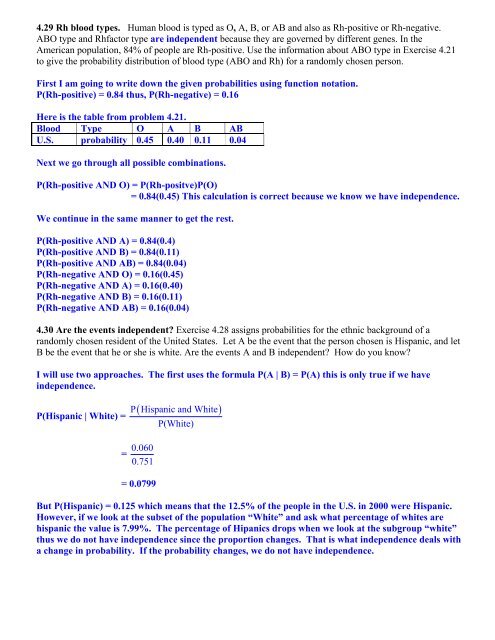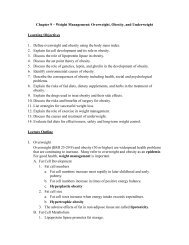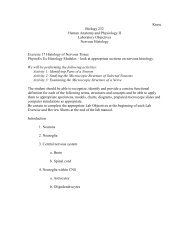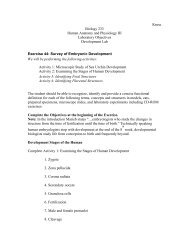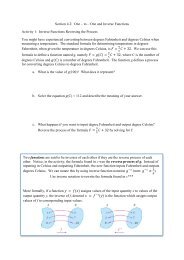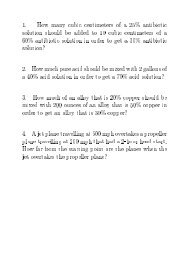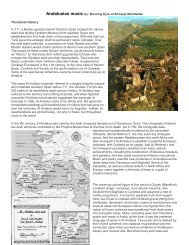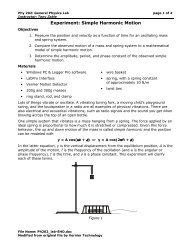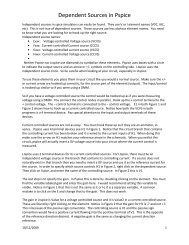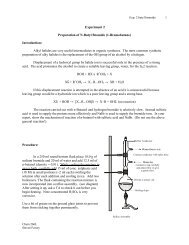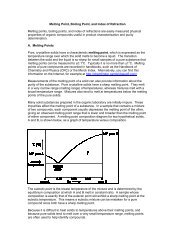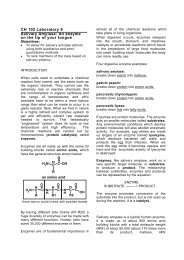Introduction to the Practice of Statistics - PCC
Introduction to the Practice of Statistics - PCC
Introduction to the Practice of Statistics - PCC
Create successful ePaper yourself
Turn your PDF publications into a flip-book with our unique Google optimized e-Paper software.
4.29 Rh blood types. Human blood is typed as O, A, B, or AB and also as Rh-positive or Rh-negative.<br />
ABO type and Rhfac<strong>to</strong>r type are independent because <strong>the</strong>y are governed by different genes. In <strong>the</strong><br />
American population, 84% <strong>of</strong> people are Rh-positive. Use <strong>the</strong> information about ABO type in Exercise 4.21<br />
<strong>to</strong> give <strong>the</strong> probability distribution <strong>of</strong> blood type (ABO and Rh) for a randomly chosen person.<br />
First I am going <strong>to</strong> write down <strong>the</strong> given probabilities using function notation.<br />
P(Rh-positive) = 0.84 thus, P(Rh-negative) = 0.16<br />
Here is <strong>the</strong> table from problem 4.21.<br />
Blood Type O A B AB<br />
U.S. probability 0.45 0.40 0.11 0.04<br />
Next we go through all possible combinations.<br />
P(Rh-positive AND O) = P(Rh-positve)P(O)<br />
= 0.84(0.45) This calculation is correct because we know we have independence.<br />
We continue in <strong>the</strong> same manner <strong>to</strong> get <strong>the</strong> rest.<br />
P(Rh-positive AND A) = 0.84(0.4)<br />
P(Rh-positive AND B) = 0.84(0.11)<br />
P(Rh-positive AND AB) = 0.84(0.04)<br />
P(Rh-negative AND O) = 0.16(0.45)<br />
P(Rh-negative AND A) = 0.16(0.40)<br />
P(Rh-negative AND B) = 0.16(0.11)<br />
P(Rh-negative AND AB) = 0.16(0.04)<br />
4.30 Are <strong>the</strong> events independent? Exercise 4.28 assigns probabilities for <strong>the</strong> ethnic background <strong>of</strong> a<br />
randomly chosen resident <strong>of</strong> <strong>the</strong> United States. Let A be <strong>the</strong> event that <strong>the</strong> person chosen is Hispanic, and let<br />
B be <strong>the</strong> event that he or she is white. Are <strong>the</strong> events A and B independent? How do you know?<br />
I will use two approaches. The first uses <strong>the</strong> formula P(A | B) = P(A) this is only true if we have<br />
independence.<br />
P(Hispanic | White) =<br />
P( Hispanic and White)<br />
P(White)<br />
= 0.060<br />
0.751<br />
= 0.0799<br />
But P(Hispanic) = 0.125 which means that <strong>the</strong> 12.5% <strong>of</strong> <strong>the</strong> people in <strong>the</strong> U.S. in 2000 were Hispanic.<br />
However, if we look at <strong>the</strong> subset <strong>of</strong> <strong>the</strong> population “White” and ask what percentage <strong>of</strong> whites are<br />
hispanic <strong>the</strong> value is 7.99%. The percentage <strong>of</strong> Hipanics drops when we look at <strong>the</strong> subgroup “white”<br />
thus we do not have independence since <strong>the</strong> proportion changes. That is what independence deals with<br />
a change in probability. If <strong>the</strong> probability changes, we do not have independence.


